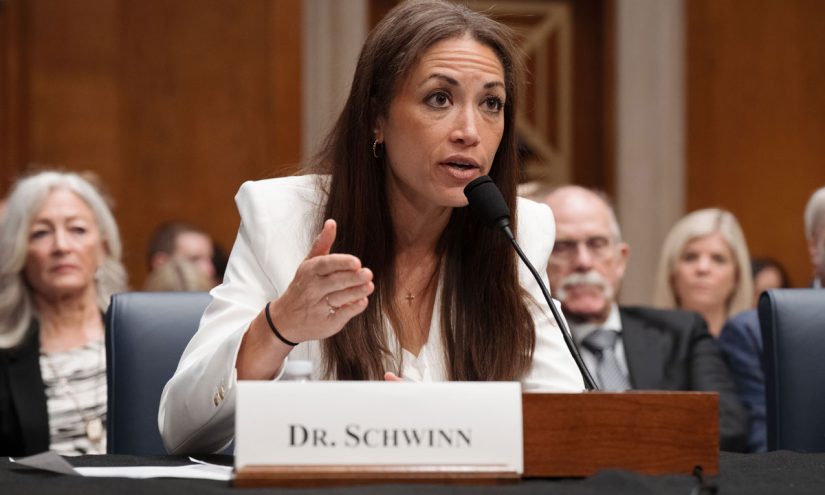For a party that it’s become fashionable to criticise for failing to have prepared for power, Labour has in fact set an awful lot of ambitious policy machinery into motion over the last 16 months.
There’s barely been a month go by without some large-scale reform to how the country is governed, organised, and understood as a sum of diverse parts and competing pressures, and we’ve had our work cut out thinking through the implications of each for the higher education sector: from devolution to industrial strategy, from health reform to an explicit tying together of skills and migration (which has barely got started yet), from a new communities strategy to belatedly moving skills policy to the Department for Work and Pensions.
Whatever your views on the merits and mechanics of these, and the many other initiatives that different departments have launched, they are all downright interesting – and pose a plethora of questions for how higher education fits in and demonstrates value.
But all need time. The overall ambitions of devolution are still on their starting blocks as councils pitch their ideas for new geographies; the industrial strategy was explicitly badged as bearing fruit in 2035; the NHS workforce plan that should really have been alongside the 10-year health plan has been delayed to the spring – and so on and so on. No-one involved in pulling together all these long-term reforms did so under the assumption that all the pieces would be in place within one parliamentary term.
Yet here we now are, with the commentariat consensus being that both Keir Starmer and Rachel Reeves are toast, and public sentiment pointing emphatically in that direction as well – though this is not to say the party cannot regain momentum under a new leader. The sector is already asking questions about how to prepare for a Reform government (as discussed in the most recent instalment of our new HE Influence newsletter, I should mention).
The post-16 white paper presented a somewhat upbeat vision of what the government would like higher education’s role to feel like across the country, but was weaker on any kind of immediate reform, proposing instead that traditionally glacial changes to research funding, a piece-by-piece strengthening of the Office for Students’ remit, and putting FE, HE and business in the same room would do much of the heavy lifting, given time and goodwill.
All this feels like a recipe for the sector to retreat to more comfortable home territory over the next few years, fighting battles over the international student levy, the size of teaching grants, and the shape of the REF, and gradually giving up on pushing for a central role in the government’s overall vision for the country, given the increasing probability that dreams like a planned and unswerving industrial strategy will all be swept away in 2029.
Quite what’s to be done about all this is a question for another day – with the Budget looming on Wednesday, and admittedly still three and a half years in office remaining for Labour, the other thing that’s worth reflecting on is quite how much the choices the Chancellor makes around tax, public spending, debt, and general macroeconomics will determine the success – or otherwise – of higher education institutions in England over the next few years. These big tickets items all impact the sector deeply, however much the temptation might be to throw one’s hands up in the air, snipe about a “tax” on overseas recruitment, and start looking at what opposition parties can be convinced of.
Labour on labour
There’s a pretty strong case to be made for the most consequential policy decision for universities since Labour came to power being the decision to hike employer national insurance contributions in last autumn’s budget. Clearly it has cost universities a small fortune, and the move also sucked up a sizeable slice of the government’s various funding “boosts” for schools and FE colleges – and the NHS and elsewhere – leaving less putative generosity to go around.
But perhaps most importantly of all, the ENICs rise has decimated the labour market for young people – in the court of public opinion at least – by making new hires and part-time workers more expensive, all while AI is supposedly making them obsolete.
The result is that university graduates – and the institutions ever more judged on those graduates’ success – are seen to be in a right old state. The Guardian was the latest to take a run at this last week, with tales of qualified grads banging their heads against the job application wall, accompanied by analysis from the paper demonstrating that almost half of all jobs lost since Labour came to power were among the under-25s. Down in the small print we see that this is driven almost entirely via reduced employment of 16- and 17-year-olds, but the vibes aren’t good, even if less hyperbolic analysis from the likes of the Institute of Student Employers and Prospects Luminate paints merely a concerning, rather than cataclysmic, picture.
The sad fact is that, longer term, this deluge of negative publicity about the value of a degree – alongside a necessary tailing off of the supposed “graduate premium” as a viable sector talking point as the minimum wage heads ever up – will inevitably move from being fodder for anti-HE journalists to actually driving changes in young people’s decision-making (even if a tight jobs market in the short-term often pushes graduates back towards postgraduate study) and scar the sector’s ability to make its case for its value.
The result is that keeping a watchful eye on Labour’s economic moves around the costs associated with employment – both on Wednesday and beyond – has become a matter of some importance for higher education. Further increases in the national living wage over the next few years, lower-profile changes to business taxation, and even wildcards like any surprise revenue-raising changes to the growth and skills levy, all hold the possibility of making this problem worse. All while leading to higher costs for universities and making it harder for students to work alongside their studies, despite this being ever more necessary.
Pound in pocket
Rachel Reeves finally taking the plunge with an income tax rise, as a good proportion of the Labour backbenches were calling for, seems to have definitively fallen off the table for the Budget – with a handful of consequences worth noting for the sector.
First, it will almost certainly mean that future spring and autumn statements will be equally fraught, as the Treasury fails to leave clear blue water between its spending plans and its spending rules. By not maintaining a sensible “headroom”, public finances will remain permanently at the mercy of external shocks and OBR downgrades, and we’ll probably be back here in less than six months’ time wondering what levers will need to be pulled. At least at some point in the Parliament, said levers will end up being haircuts to departmental budgets rather than new taxes or further borrowing.
Following on from this, the use of a basket of smaller revenue-raising measures to partially fill the gap left by not raising income tax increases the likelihood that this shortfall gets filled by employment-related measures – that is, all the issues we’ve been over above, which have serious consequences for universities as large employers who are not quite in the public sector (as may be the case this week if rumoured changes to salary sacrifice rules go ahead).
And the other effect that an income tax rise would have achieved, which the “smorgasbord” approach will not to the same extent, is bringing down inflation.
Inflation is arguably the most serious financial threat that higher education institutions face. Even if many within the sector, both in internal conversations and public pronouncements, are often quite happy to let audiences believe that measures like the dependants ban are what’s most responsible for blowing a hole in HE finances, the fundamentals weren’t sound even before the post-pandemic recruitment glut.
While tuition fees and maintenance loans in England (and, at least for one year, Wales) are now linked to inflation, or more precisely to inflation forecasts – Office for Budget Responsibility predictions on Wednesday will set the levels for 2026–27 – the idea of any measures to compensate for all the shortfalls baked in over several years of rocketing price rises appears to have been permanently nixed.
And it’s worth bearing in mind that the index link does not mean that either student maintenance or teaching funding will actually keep pace with inflation in the coming years. For one thing, OBR forecasts have repeatedly underestimated inflation, and there’s no corrective mechanism in the system. For student maintenance, even if predictions come true, other features of the system mean that the average, rather than maximum, maintenance loan continues to be worth less each year.
For teaching funding, it’s important to stress that Labour has in no way committed to keeping the overall package inflation-proofed. While tuition fees are the major part here, other elements such as high-cost subject funding took a real-terms tumble this year, and no-one is predicting that the reforming the Strategic Priorities Grant means upward movement on how much it’s worth – the reverse is far likelier, given DfE’s commitments elsewhere.
University staff have had a decade or more of below inflation pay rises, and there doesn’t seem any serious capacity or appetite among higher education employers to do fundamental work here – the year-on-year squabbles will continue, and high levels of inflation over the coming years will eat further into staff remuneration and the attractiveness of higher education careers.
And inflation-linked rises in tuition fees will also change applicant behaviour. One thing we’ll start getting a sense of on Wednesday will be the likelihood of when fees will cross the (supposedly) psychologically important barrier of £10,000. Back in March, the OBR was expecting RPIX to run at 2.7 per cent in Q1 2027, and 2.8 per cent in Q1 2028, which would lead to tuition fee caps of around £9,790 in 2026–27 and around £10,065 in 2027–28. We won’t know for certain until autumn 2026, but the picture will start to come into focus.
Now the significance of fees being materially above, rather than roughly equal to, £10k is perhaps overstated. But DfE isn’t really sure – it has reportedly commissioned modelling on how students will respond to rises, but the results aren’t due until the spring.
All in all, there’s a whole host of reasons why Budget decisions and their effect on inflation, as well as the OBR forecasts themselves, have become heavily intertwined with the future behaviour and wellbeing of higher education staff and students.
Gilt trips
Perhaps the most overlooked publication of the last few years for really understanding how the Treasury thinks about higher education is the Institute for Fiscal Studies analysis of how the interplay between interest rates and Treasury gilts affect the cost of student loans.
In a nutshell, it costs far more for the government to borrow than it used to (the 15-year gilt yield has continued to rise since the IFS did its sums in January 2024), and so it’s very reluctant to allow for too much expansion in the student loan book – it’s a far cry from when the broad strokes of student finance were put in place by the coalition government, and this was basically thought of as free money.
This goes a long way to explain why the government is so reticent to use the student loan book in any radical way – and thus we see things like a real-terms freeze in tuition fees being presented as if it’s an almost saint-like act of generosity to the sector, or the foundering of DfE’s tepid-but-probably-genuine desire to properly boost maintenance loans.
We’re waiting for the specifics (hopefully) of maintenance grant implementation on Wednesday, but the cost of government borrowing feels like it has played a role in the last year of behind-the-scenes policy deliberations here. In the run-up to last autumn’s Budget, there was plenty of speculation, and government nods to the press, about the potential for movement on the overall maintenance package and grants in particular. Clearly the battle with the Treasury was lost, and DfE was told to come up with an alternate source of funding – hence the international student levy. What we don’t yet know is to what extent grants will replace, rather than supplement, loans – if what we see is a switch from one to the other, the expense to the public purse of borrowing is a likely primary driver, especially given the hidden costs associated with annual tuition fee rises. While the sector isn’t really getting any more money in real terms, this isn’t to say that the government’s finances are not being stretched by indexing fees.
What this all means is that, unfortunately, the sector needs to keep an eye on the gilts market. The supposed flip-flop on raising income tax has already done some damage here, and the government repeatedly needing to borrow more than it expected to is another issue. There’s a wider question of perceived government competence around balancing the books that drives behaviour too – confidence is in short supply as it is, and it will get worse if the Starmer era implodes. This all equates to longer-term uncertainty about the use of the student loan book.
Even if you’ve given up on the Labour government in its current form, and are pinning hopes on a future government being more receptive to calls for support and investment in both universities and students, Number 10 and the current Treasury team are still setting the economic weather. While much of the sector will be waiting for the moment Rachel Reeves stops speaking on Wednesday to see the fee levy policy paper – assuming there is one, and the can doesn’t get kicked – there are many reasons to think the wider public finances are a much more important determinant of the future of higher education. And it’s one that isn’t painting a particularly cheery picture at the moment.







